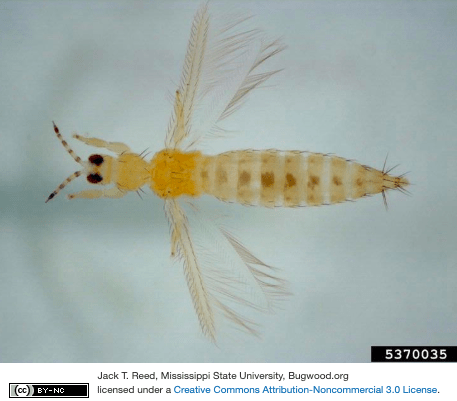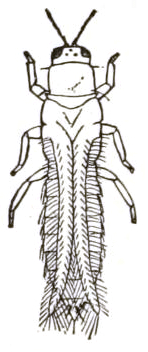Although strawberries are not considered to be a vegetable crop, using VegNet is a good way to get information out to growers who have both vegetables and berry crops.
Strawberry fruit that have been injured by thrips are a dull or bronzed color, and are often small, hard, seedy, and fail to ripen. They can cause uneven maturity of fruit. When severe, their injury can make the strawberry crop completely unmarketable.
Thrips are an occasional serious pest of strawberries. This means that in most years, they are not a problem, but in some years, they can be a big problem. One such year was 2018 for some growers in Ohio. As far as we understand the problem, the reason for variability from year to year has to do with weather systems. In some years, conditions are right that large numbers of small insects such as thrips and leafhoppers are carried on strong weather fronts moving from the southern USA into Ohio during the time that strawberries are in bloom. In other years, this long-distance movement does not happen at all, or happens later, at a time when strawberries are no longer in bloom.
Thrips are small, slender, elongate, cigar-shaped insects, about 1 mm (1/25 inch) long. They differ from other insects by having narrow strap-like wings that are fringed with hairs (Figure 1). The wings are usually folded lengthwise over the back when they are resting or feeding (Figure 2). They have asymmetrical mouthparts (Figure 3) that have a well-developed left mandible and an underdeveloped right mandible. They feed by piercing plant cells by the mandible then sucking sap that oozes out of the punctured cells. Thrips generally have flowers as their preferred plant part. They are found in flowers of many species of plants. Thrips are often overlooked due to their small size and their tendency to hide in protected places. When present at low density, thrips are often not harmful to plants.
The thrips species that infests outdoor strawberries is Frankliniella tritici, which has the official common name of ‘flower thrips’, but which is widely known as the eastern flower thrips. It does not tolerate cold weather well so does not survive winter well in places like Ohio. The adults are yellowish brown, and the larvae are whitish-yellow. The larvae are similar to the adults in shape but smaller and without wings. On strawberries, the infestation starts by adult thrips during bloom but then can continue during fruit set by adults and their offspring larvae. Thrips hide under the cap of the berry or in grooves around the seeds on the berry.
A key to thrips management is frequent monitoring, at least once per week. Growers should examine early flower clusters on early cultivars. In each of five to 10 areas of the field, five to 10 blossoms should be tapped into a white cup, or into a zip-top sandwich bag, which should then be examined for the dislodged thrips running around on the surface. Count the number of thrips found, then calculate the average number of thrips per blossom. A rough action threshold for treatment with insecticide is the presence of 2 or more thrips per blossom. Once fruit are ¼ inch in diameter, an action threshold is 0.5 thrips per fruit. If thrips are above threshold, the trickiest part of management is to avoid spraying insecticide that will harm pollinators. Insecticide should be applied pre-bloom or before 10% of the plants have open blossoms. If thrips are found above threshold on early cultivars, then a preventive spray can be made on the later cultivars before their flowers open, to avoid harming pollinators.
Insecticides used to control thrips on conventional strawberries are Radiant, Assail, and Sivanto, all of which have thrips listed as a target pest on their labels. Thrips are well controlled by Lorsban, Brigade, and Danitol, which are allowed for use on strawberries, but thrips are not listed as a target pest of the label of these three products. Note that Lorsban has a 21-day pre-harvest interval. Products for thrips control on organic strawberries are Entrust and azadirachtin products such as Neemix and Aza-Direct.
If a biological control approach is preferred, several kinds of natural enemies are available for purchase from commercial insectaries for thrips control: Orius (predatory flower bugs), and two species of predatory mites: Amblyseius cucumeris and Ambylseius swirskii. Biocontrol is not feasible to begin once the thrips population is large but can be planned in advance at locations that have a consistent problem with thrips.
by Celeste Welty, Extension Entomologist






